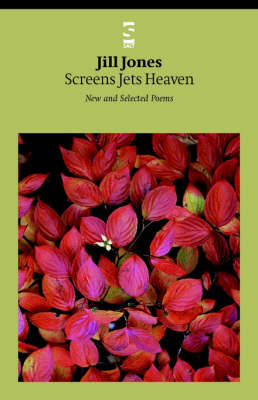Salt Modern Poets
2 total works
These poems are traces and markings through continuous topographies - streets, shores, bodies. They offer an experience of language underway, of jumping into the midst. Their shifts and discontinuities open up spaces through the immediate, memory, the personal, the difficulties of being situated or identified. Many of them are shards, borrowings and reshapings of forms, overheard dialogue and writings and art by others, signs and relics of the concrete world, tensions in a moment, the overturning of the ordinary like a leaf, and the resistance of playing at edges.
Jones uses the soundtracks of modern lives - weather and television, music and journeys - as she negotiates difficult harbours and debatable terrains with perhaps more tenderness than previously in these times which seem broken and open. The poems are also voicings of a self under pressure, or close to breaking into the open, imagined, uncertain. They juggle a distrust of too many explanations and a wanting to know, to investigate through word magic and formal strategies.
More than ever, locations and displacements interest this poet, the incompleteness of all journeys, gaps and mistakes, where gaps are not empty, where absence is presence. The moves in the book work at times against Jones' usual reception as an urban poet with a broader mapping than before. Some of the writing is sparser and more open, the meditative lyricism is tempered with a humorous scepticism and argument, the poems more intuitive. Longer sequences and serial poems blend the topical and musical with a subtlety of feeling, an ear for taut lineation strung together on a thread of three or four presiding images. `The pages colour with the various, speaking skin of it, life.'
Screens jets Heaven contains a selection of poems from Jill Jones's previously published books, followed by a solid selection of new and uncollected poems. The work is intellectually sharp, alternately tough, lyrical, fibrous, dangerous, sceptical and delicate, characterized by clear-eyed imagery, taut lineation, humour and a distinctive mellifluous rhythm. Jones explores the boundaries of inner and outer experience, the shifts and discontinuities between fact and possibility. Hers is often a poetry of atmospheres – physical, emotional, etheric as it encompasses and moves through the grit and clamour of streets and neighbourhoods, the traffic of both road and air, harbours and city office blocks, work life, domesticity, the passions of the heart. She is an exploratory, expansive poet: nature (both terrestrial and celestial), the movement of the elements and weather, various affects of night and day are integrated within her human, psychic landscapes as a way of engaging with the rhapsodic. Her work is concerned with both the physical and material as well as more subtle levels of feeling and inner consciousness. Throughout the collection there is an involvement with the nature and quality of urban and inner suburban existence – as represented by the city of Sydney. The poet's persona observes, engages with, absorbs, scrutinizes and meditates on contemporary urban existence, in all its various tempers and tones. She invites the reader to share in the speculative processes of discovery. Overall this is a powerful collection, characterised by a sensual richness and a surrealist, transformative energy.

